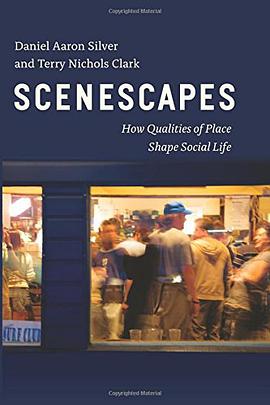Scenescapes
豆瓣
How Qualities of Place Shape Social Life
Daniel Aaron Silver / Terry Nichols Clark
简介
Let’s set the scene: there’s a regular on his barstool, beer in hand. He’s watching a young couple execute a complicated series of moves on the dance floor, while at the table in the corner the DJ adjusts his headphones and slips a new beat into the mix. These are all experiences created by a given scene—one where we feel connected to other people, in places like a bar or a community center, a neighborhood parish or even a train station. Scenes enable experiences, but they also cultivate skills, create ambiances, and nourish communities.
In Scenescapes, Daniel Aaron Silver and Terry Nichols Clark examine the patterns and consequences of the amenities that define our streets and strips. They articulate the core dimensions of the theatricality, authenticity, and legitimacy of local scenes—cafes, churches, restaurants, parks, galleries, bowling alleys, and more. Scenescapes not only reimagines cities in cultural terms, it details how scenes shape economic development, residential patterns, and political attitudes and actions. In vivid detail and with wide-angle analyses—encompassing an analysis of 40,000 ZIP codes—Silver and Clark give readers tools for thinking about place; tools that can teach us where to live, work, or relax, and how to organize our communities.
contents
Acknowledgments
1 Setting the Scene
2 A Theory of Scenes
3 Quantitative Flânerie
4 Back to the Land, On to the Scene: How Scenes Drive Economic Development
5 Home, Home on the Scene: How Scenes Shape Residential Patterns
6 Scene Power: How Scenes Influence Voting, Energize New Social Movements, and Generate Political Resources (with Christopher M. Graziul)
7 Making a Scene: How to Integrate the Scenescape into Public Policy Thinking
8 The Science of Scenes (with Christopher M. Graziul)
Notes
References
Index

